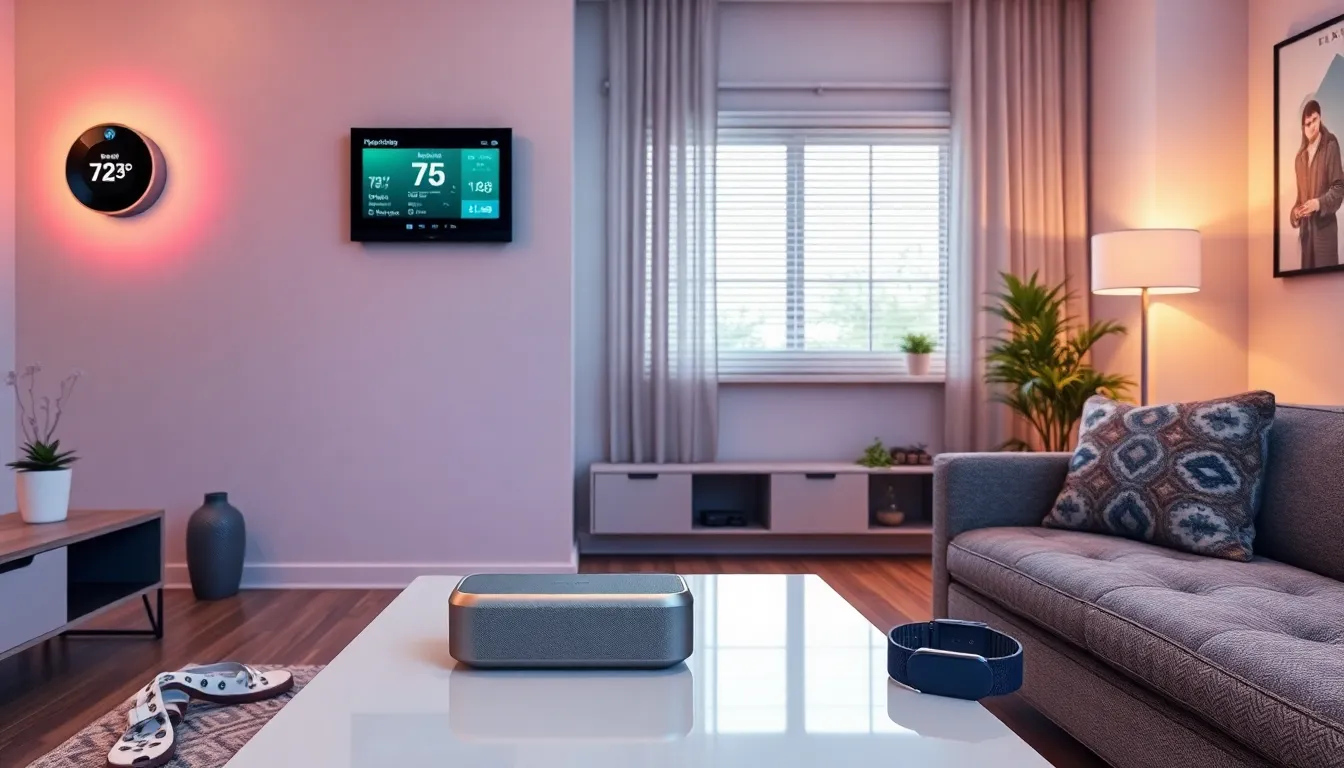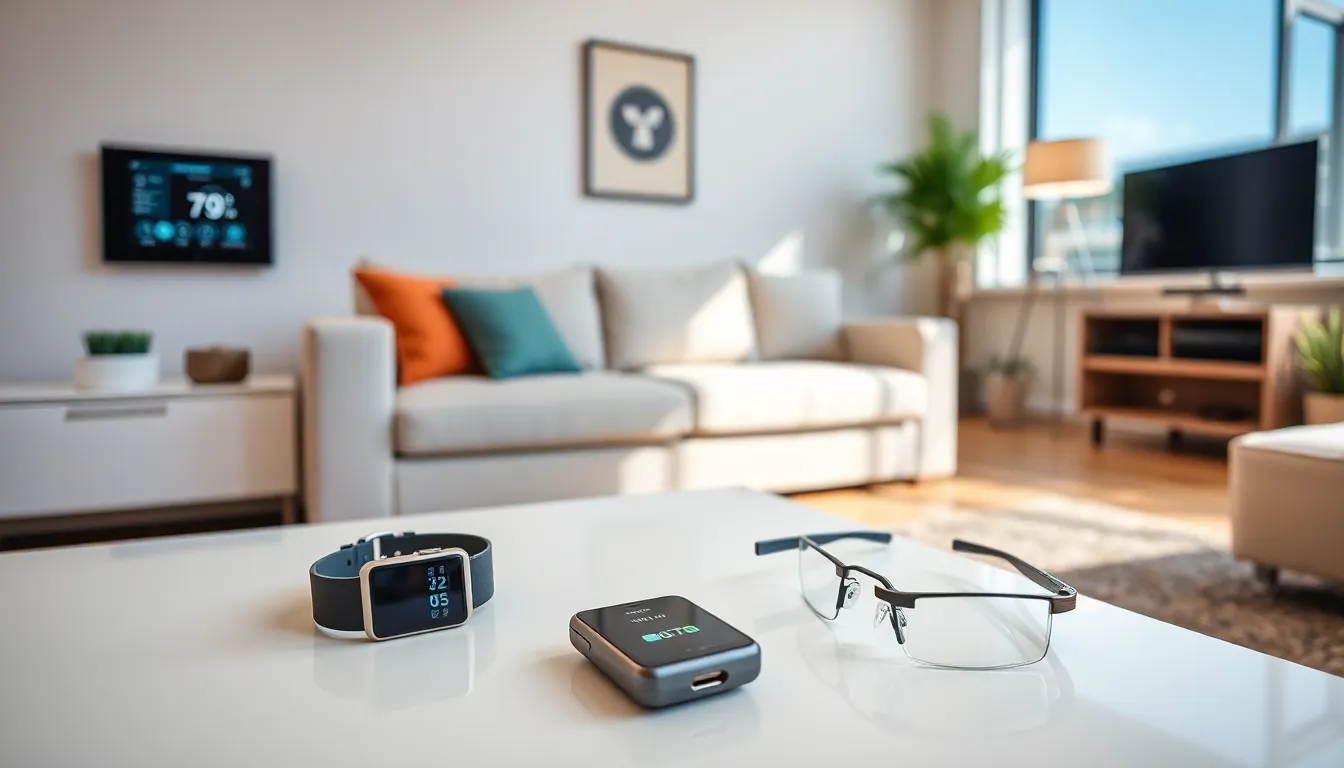In a world where technology evolves at lightning speed, advanced tech gadgets are redefining convenience and innovation. From smart home devices that streamline daily tasks to wearables that monitor health, these gadgets are more than just novelties; they’re essential tools that enhance modern living.
As consumers seek smarter solutions, the market has exploded with cutting-edge inventions designed to simplify life and boost productivity. Whether it’s a sleek smartphone with AI capabilities or a versatile gadget that integrates seamlessly into daily routines, the latest advancements are transforming how people interact with technology. Embracing these innovations not only keeps users ahead of the curve but also offers a glimpse into the future of tech.
Overview of Advanced Tech Gadgets
Advanced tech gadgets represent a significant shift in the dynamic between humans and technology. These devices streamline tasks, improve efficiency, and enhance user experiences across various sectors. Smart home devices, such as intelligent thermostats and automated security systems, showcase this transformation by allowing remote management and monitoring, providing consumers with enhanced control over their environments.
Health-monitoring wearables also exemplify advanced technology. Smartwatches and fitness trackers enable real-time monitoring of vital signs and other health metrics, promoting proactive health management. This wealth of data empowers individuals to make informed lifestyle choices and seek medical advice when necessary.
The market for advanced gadgets continues to expand, with innovations being introduced regularly. Products such as augmented reality glasses and smart speakers are now commonplace, reflecting pervasive integration into daily routines. Enhanced connectivity, powered by 5G technology, drives this growth, allowing devices to communicate and function seamlessly.
Data from industry reports indicates that consumer interest in these gadgets has surged. The global smart home market is projected to reach $174 billion by 2025, while the wearables sector is expected to hit $60 billion in the same timeframe. This growth underscores the increasing reliance on technology for convenience, efficiency, and improved quality of life.
Overall, advanced tech gadgets serve as pivotal tools in modern society, shaping how individuals interact with technology and each other. They reflect a broader trend towards smarter living environments and personalized health management, providing insights into future technological advancements.
Latest Innovations in Advanced Tech Gadgets


Advanced tech gadgets continue to evolve rapidly, revolutionizing how individuals interact with their environments and manage personal health. This section highlights two primary categories: smart home devices and wearable technology.
Smart Home Devices
Smart home devices enhance convenience and control, making homes more efficient. Intelligent thermostats utilize machine learning to adapt to user preferences, optimizing energy usage and reducing costs. Automated security systems incorporate real-time surveillance features, allowing homeowners to monitor their properties remotely via mobile apps. Smart lighting solutions enable users to adjust brightness and colors through voice commands or mobile controls, enhancing ambiance while improving energy efficiency. Voice-activated assistants improve functionality by integrating with various devices, providing seamless communication and a centralized control system.
Wearable Technology
Wearable technology offers innovative solutions for health and fitness management. Smartwatches deliver notifications, track activity levels, and monitor vital signs, enabling proactive health assessments. Fitness trackers, often equipped with heart rate monitors and GPS, encourage users to engage in physical activities by setting goals and tracking progress in real-time. Emerging devices feature specialized sensors that continuously monitor complex health metrics, including blood oxygen levels and sleep patterns, allowing users to gain deeper insights into their well-being. Furthermore, smart glasses integrate augmented reality, enhancing user experiences in various settings, from gaming to navigational assistance. These advancements demonstrate how wearable technology empowers individuals to take charge of their health and lifestyle.
Evaluating Performance and User Experience
Assessing the performance and user experience of advanced tech gadgets involves analyzing various critical features and user feedback. This evaluation helps determine the most effective devices in enhancing daily tasks.
Key Features to Consider
- Processor Speed: Devices with faster processors execute tasks efficiently, enabling seamless multitasking and responsiveness.
- Battery Life: Gadgets with longer battery life support extended usage without frequent charging, enhancing overall convenience.
- Connectivity Options: Products that offer robust connectivity options, such as Wi-Fi, Bluetooth, and 5G, ensure faster data transfer and better integration with other devices.
- User Interface (UI): Intuitive UIs contribute significantly to a positive user experience. A straightforward layout simplifies navigation and minimizes learning time.
- Durability and Design: Durable materials and ergonomic designs foster usability and longevity, making devices more appealing for everyday use.
- Smart Features: Advanced functions, such as voice recognition and automated settings, enhance user engagement and provide personalized experiences.
User Reviews and Feedback
User reviews provide invaluable insights into the real-world performance of advanced gadgets. Analyzing feedback highlights how well devices meet users’ needs.
- Satisfaction Levels: Positive reviews often indicate a high level of user satisfaction, particularly regarding performance and ease of use.
- Common Complaints: Frequent negative feedback usually points to specific issues, such as connectivity problems or software bugs, that manufacturers can address.
- Usage Scenarios: Users often share diverse usage scenarios, showcasing how gadgets perform in practical settings, informing potential buyers of their adaptability.
- Feature Requests: Customer suggestions for additional features can guide future product development, revealing evolving user preferences and expectations.
Combining these assessments provides a comprehensive view of an advanced gadget’s performance and user experience, informing purchasing decisions.
Future Trends in Advanced Tech Gadgets
The future of advanced tech gadgets points towards innovative solutions that redefine user experiences. Rapid advancements in technology will continue to shape products in both smart homes and wearable devices.
Emerging Technologies
Emerging technologies are critical drivers of the next wave of advanced gadgets. Artificial intelligence (AI) enhances the functionality of devices, with algorithms personalizing user experiences in smart home automation and health monitoring. Blockchain technology provides secure transactions for connected devices, increasing trust in IoT ecosystems. Furthermore, advancements in nanotechnology lead to smaller, more efficient components, enabling more powerful devices in compact forms. Quantum computing will revolutionize processing power, allowing for faster and more complex calculations in wearables. These technologies combine to create seamless integration across various platforms, fostering smarter environments that adapt to users’ needs.
Predictions for the Market
Predictions for the advanced tech gadgets market indicate exponential growth in both sectors. The smart home market is expected to surpass $174 billion by 2025, driven by increasing consumer adoption of home automation systems. Similarly, the wearables sector may reach $60 billion, fueled by the rising focus on health and fitness. Companies will likely prioritize sustainability and energy efficiency, with eco-friendly materials becoming more prevalent. Additionally, connectivity innovations, especially 5G, will enhance the functionality of gadgets, resulting in greater demand for compatible devices. Increased competition among manufacturers will push for continuous innovation, leading to groundbreaking products that enhance daily life.
